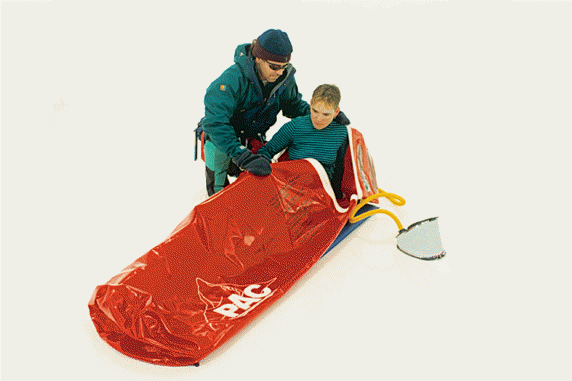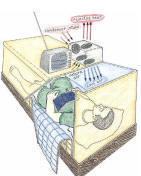
Generally Trekkers comes for high altitude himalayan treks and they are not aware about altitude sickness. It affects people in areas of high altitude, which means areas at around 2,500m above sea level. Altitude sickness is more common, and becomes more severe, with increasing altitude.If you ascend to an area of high altitude, you are likely to experience some form of altitude sickness. Usually, the symptoms are mild and will improve if you descend. Altitude sickness is most likely to affect you if you ascend quickly – especially at a rate of more than 500m per day – or if you don't allow yourself time to get used to the height (acclimatise).
Acute mountain sickness (AMS) is the most common and mildest form of altitude sickness. If you go on a climbing expedition or stay in an area of high altitude, you may develop AMS. High-altitude pulmonary oedema (HAPE) and high-altitude cerebral oedema (HACE) are much more severe forms of altitude sickness. They usually affect you only if you are at very high or extreme altitude.
WHAT COUNTS AS HIGH ALTITUDE?
o High altitude refers to heights that are between 2,500 and 3,500m above sea level.
o Very high altitude is from 3,500 to 5,500m above sea level.
o Extreme altitude is from 5,500 to 7,500m above sea level.
SYMPTOMS OF ALTITUDE SICKNESS
You may notice symptoms of altitude sickness about six to 24 hours after you've arrived at an area of high altitude. However, this varies from person to person and will depend on the speed of your ascent. If you've been climbing or ascending slowly, the onset of your symptoms will be more gradual.
IN ITS MILDEST FORM (AMS), YOU MAY:
• Have a headache
• feel tired
• feel sick or vomit
• lose your appetite
• feel dizzy
• have difficulty sleeping
Symptoms of AMS usually start to ease within about two days as your body acclimatises to the high altitude, particularly if you don't ascend any further. If your symptoms get worse, the best thing you can do is descend as quickly as possible. There are some medications that can help ease your symptoms and treat complications, but only descending will deal with the cause.
COMPLICATIONS OF ALTITUDE SICKNESS
If you ascend to an area of high altitude too quickly and don't allow your body time to acclimatise, you may develop a serious form of altitude sickness such as HAPE or HACE. These conditions are rare, but potentially fatal if you don't descend immediately and receive treatment.
- HAPE occurs when fluid builds up in your lungs. Symptoms usually develop between two and four days after a rapid ascent over 2,500m. You may:
• Have a dry cough
• Feel breathless at rest
• Have a fever
• Feel confused
• Have pink or bloody spit
• Have a bluish tinge to your skin, lips and nails (cyanosis)
If you have severe symptoms of HAPE, you may gasp for breath and make gurgling sounds when you breathe.
HAPE can occur by itself or in conjunction with HACE. HACE occurs when excessive fluid collects in your brain, causing it to swell. Fewer than two percent of people with altitude sickness develop HACE and it rarely occurs below 4,000m. If you have HACE you may:
• Have a severe headache
• Feel very confused
• Lose co-ordination
• Have blurred or double vision
• Notice changes in your behaviour - for example, you may feel irritable or be unhelpful
• Lose consciousness
• Hallucinate (see, hear, feel and smell odd things that aren't really there)
• Fall into a coma (this is rare)
The symptoms of HACE may progress rapidly from mild to life-threatening within a few hours. If you have these symptoms, you should descend to a lower altitude as soon as possible and seek urgent medical advice. You may develop other symptoms at high altitude. For example, your face, arms or legs may swell up (peripheral oedema). This usually lasts a few days and then disappears. At altitudes of 5,000m and over, tiny blood blisters can form at the back of your eye (retinal haemorrhages), but you may not notice any symptoms and they only occasionally interfere with your vision.
CAUSES OF ALTITUDE SICKNESS
At high altitudes, the air is at a lower pressure than it is nearer sea level. This makes it harder to get oxygen out of the air you breathe in, and into your bloodstream. Your body responds by increasing your breathing and heart rate.
THERE ARE CERTAIN FACTORS THAT MAY MAKE YOU MORE LIKELY TO DEVELOP ALTITUDE SICKNESS; FOR EXAMPLE, IF YOU:
• Have had altitude sickness before
• Do strenuous activity or exercise at high altitude
• Rapidly ascend to high altitude
• Have a lung infection
If you have diabetes, or a heart or lung condition, you should check with your doctor before travelling to places at altitude. Many people with such conditions can cope very well but certain severe conditions may mean it's unwise for you to travel to, or climb in, areas of high altitude.
TREATMENT OF ALTITUDE SICKNESS
SELF-HELP-IF YOU HAVE THE SYMPTOMS OF AMS, YOU SHOULDN'T ASCEND ANY HIGHER. YOU SHOULD:
• Rest
• Make sure you drink enough fluids
• Take painkillers, such as paracetamol or ibuprofen if you have a headache
• Take ant sickness medicines, such as cinnarizine or promethazine, or other common anti-histamines to ease sickness and dizziness.
You can buy painkillers and ant sickness medicines from a chemist without a doctor's prescription. Always read the patient information that comes with your medicine and if you have any questions, ask your pharmacist for advice.
Oxygen

If your symptoms become more severe, you may need to breathe oxygen in through a face mask. You may also need hyperbaric treatment - this is where you enter a special, pressurised chamber to help get your oxygen levels back to normal.
Medicines
If you have the symptoms of HAPE or HACE, you may be able to take a medicine such as nifedipine or dexamethasone. Occasionally these drugs are given at location, particularly if you are unable to descend quickly and safely. The earlier they are taken, the greater their effectiveness.
Prevention of altitude sickness
There are a number of steps you can take to prevent altitude sickness. Wherever possible:
• Acclimatise yourself to high altitudes by slowly ascending over several days - if possible, don't sleep at an altitude more than 300m higher than the previous night
• Make sure you drink enough fluids
• Eat high-carbohydrate foods
• Don't do any strenuous exercise or activity for the first few days after you arrive at a high altitude and have rest days planned if you are ascending further
There are several medications you can use to prevent the symptoms of altitude sickness. A medicine called acetazolamide is being used more and more, but it isn't, however, a substitute for acclimatisation. Alternatively, you may be able to take a medicine called dexamethasone. This is effective for both prevention and treatment of altitude sickness and can prevent HAPE if you have suffered from severe altitude sickness before. If you have had HAPE before, your doctor may prescribe you a preventive drug such as nifedipine.
Ask a doctor from a travel clinic about these medicines because you can only get them on prescription. Always ask your doctor for advice and read the patient information that comes with your medicine.







